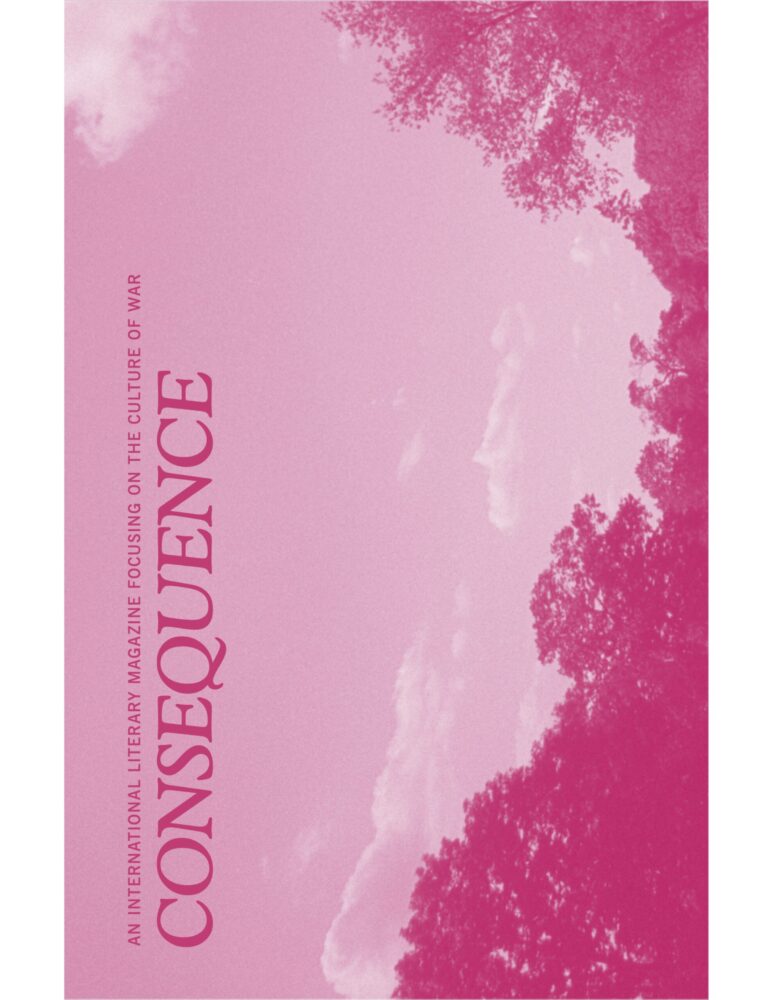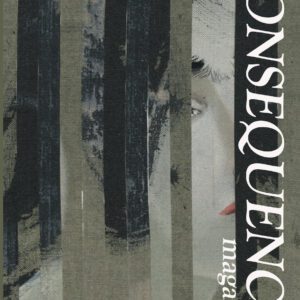Volume 10
$5.00
Editor’s Note
The photographs taken by Virginia Dwan and featured in this issue were selected from her book, Flowers (Radius Books 2016). Straightforward and clear, they appear at first as traditional statements in black and white about the consequences of war. But look again at these repeated images of military cemeteries that initially seem so alike and so familiar. One after another rank and file of identical markers extend from a particular moment in time and point of view to a vanishing point that is both past and future. If you were to walk toward the horizon in any one of Dwan’s photographs into that white, unnatural symmetry, you would find just beyond the trees vast stretches of land held in reserve for new graves. Now step back and notice how the peripheral space stretches in all directions, not attempting to contain what is alive and what is not. This is a patient, capacious response that never shies away from the obscene banality of war. Rather, it intentionally compounds and accumulates images to embody overwhelming loss. Still, despite the visceral sensation of wanting to turn away, we cannot escape the contradiction that a manicured, military arrangement of the dead is not, as Dwan shows us, without a disturbing kind of beauty. Do the frequent ceremonies at Arlington or any national cemetery make war honorable and easier to accept?
Virginia Dwan named her book of photographs Flowers, referring to Pete Seeger’s Vietnam-era song of resistance, but now, four generations of “permanent war” later, that title echoes with a renewed sense of irony. Like the woven refrains in a ballad or a hymn, each image in Flowers connects the one before it to the one after. To make the continuation of war tangible, Flowers comprises a series of images printed on one long, heavy sheet that folds together like the fabric of a bellows—as though the country’s national cemeteries stretched without interruption from Long Island to San Francisco, and then collapsed in on themselves. The necessary effort to view these accordion-like panels of contiguous images subverts the habit of turning a page and moving on. Dwan’s tactile layout forces you to handle each successive photograph as distinct, yet like others. It’s necessary to pause and think about this process, and perhaps even accept the responsibility of seeing. You have to choose to continue the journey. It’s a moral as well as an aesthetic choice.
In Seeger’s song, the rhetorical question “where have all the young men gone” equates soldiers to men, so it’s fitting that the lyrics include the words “lone time ago.” Today, women return from war with the same visible and invisible wounds as men. They write and create art about combat and the many forms of devastation that war causes, but their work does not get the same attention or opportunity for publication as men’s. And for far longer than women have soldiered, they have contributed to war narratives as witnesses, survivors, doctors, nurses, journalists, mothers, sisters, partners and spouses. It’s obvious that their voices are essential for a full and nuanced understanding of what is at stake when we accept if not support the decisions made on our behalf by an elected elite.
The 10th Anniversary Issue of CONSEQUENCE focuses on the enormous contributions made by those women who write and create art in response to war. Since this magazine’s founding we’ve sought their perspective and insight, their wisdom and mastery. It’s very satisfying to look back, mark the names, compare the numbers and find that since 2008, more than half of our authors have been women. Numbers, of course, don’t indicate what you will realize when you read their work. We need the strength and empathy of women for all of us to be strong.
—George Kovach



















